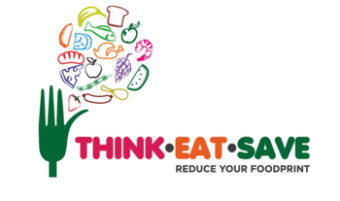 Happy World Environment Day! The UNEP theme for this special day is Think! Eat! Save!
Happy World Environment Day! The UNEP theme for this special day is Think! Eat! Save!
So much food is wasted needlessly in the world. Are you part of this wasteful chain? Zero waste is a goal sought by many individuals and organisations – especially when it comes to food. Good menu and shopping planning, as well as good waste mangement are key (Does this recall Home Economics skills anyone? 🙂 ) So make that extra effort today to ensure that any food you buy or prepare to eat will be consumed 100%. And then make this a habit in your household and workplace as from tomorrow.
Here are just a few examples of what others are doing around the world:
Think.Eat.Save (International) – This initiative, launched by the U.N. Environment Programme and the U.N. Food and Agriculture Organization, works to reverse food loss and food waste by providing consumers, retailers, leaders and the community with advice and ways to take action to reduce their yearly food waste. The campaign aggregates and shares different methods of conserving food, including policy recommendations and steps that consumers and households can take on their own to prevent waste.
Culinary Misfits (Berlin, Germany) –Started by two friends, Culinary Misfits seeks out the ugly vegetables at grocery stores, farmers markets, and restaurants and turns them into delectable dishes at the events they cater in the city.
Love Food, Hate Waste (United Kingdom) – This program teaches consumers about food waste and provides them with helpful portioning and planning tips, as well as an array of recipes to make sure food doesn’t go to waste.
Stop Spild Af Mad (Stop Wasting Food) (Denmark) – Danish food expert Selina Juul’s campaign inspired Danish supermarket Rema 1000 to replace buy-one-get-one-free and other quantity-based discounts with general discounts in all of its stores. Such discounts, frequently implemented by grocery stores to get produce off the shelves, often result in food being wasted at home.
FUSIONS (Food Use for Social Innovation by Optimising Waste Prevention Strategies) (European Union) – After recognizing that the European Union discards approximately 89 million tons of food every year, Brussels has pledged, through the FUSIONS program, to reduce that number by half by the year 2025. Currently in development, FUSIONS hopes to tackle the issue throughout the supply chain, working with farmers so that they don’t reject less-than-perfect-looking produce. And they work with grocery stores to offer discounts to consumers on products that are nearing their expiration dates.
Songhai Centre (Sub-Saharan Africa) – The Songhai Centre is a sustainable development organization that, among other projects, teaches environmentally conscious farming practices in rural areas in Benin, Nigeria, Liberia, Sierra Leone, and the Democratic Republic of the Congo. Their agricultural education is based on a policy of production totale zéro déchet (zero waste total production) – in the organization’s own words, “the byproducts of one field are valuable raw materials for another.”
University of Cincinnati SolerCool (Ohio, United States) – Developed by MBA students at the University of Cincinnati, this solar-powered refrigerator runs on eight solar panels to keep food comfortably cool when it is being transported.
Sanford and Son (Illinois, United States) – Sanford and Son is a father-and-son company that works in the West Side of Chicago to repurpose food waste for urban farms. Ray Sanford and his son Nigel recycle food waste from restaurants and private homes and convert it into organic compost, which is then distributed to urban farms to use as fertilizer. They claim to save 226 kilograms (500 pounds) of organic waste for each family that uses their composting services.
(Source of examples — Food Tank: The Food Think Tank)
